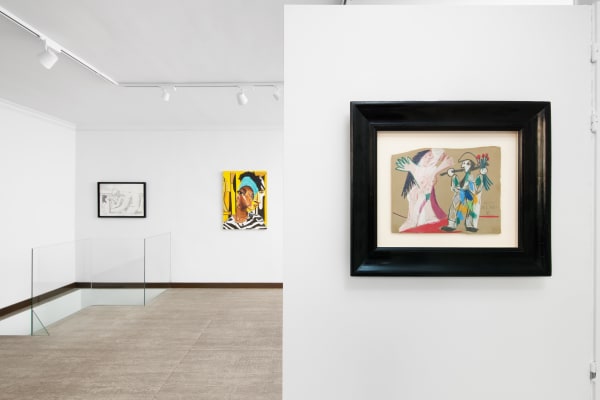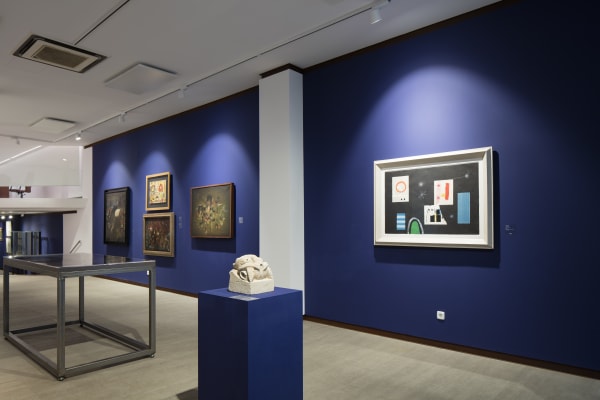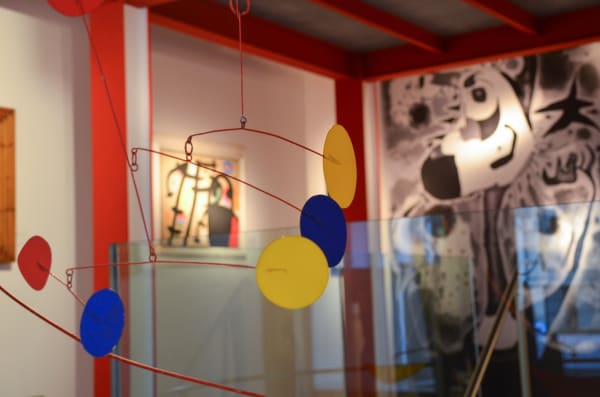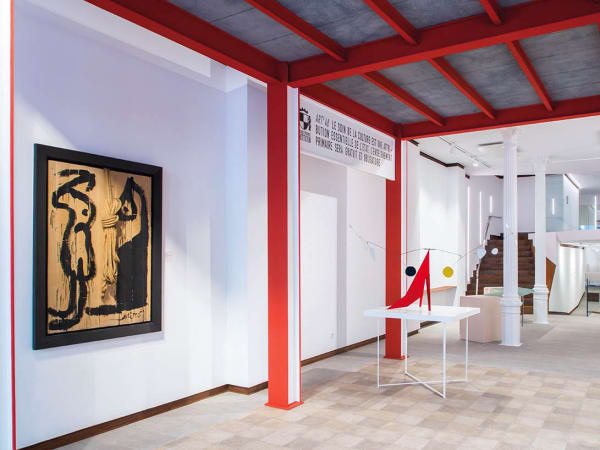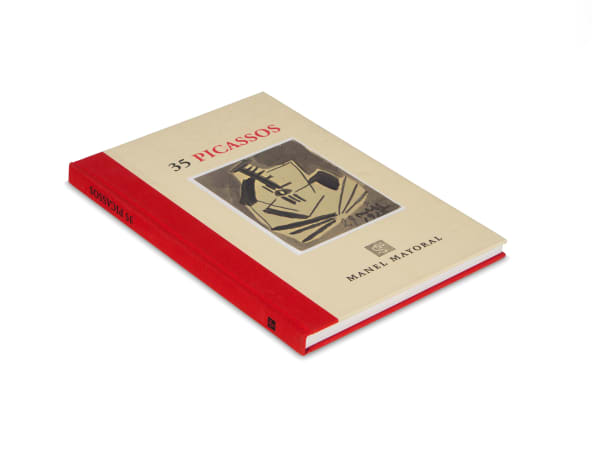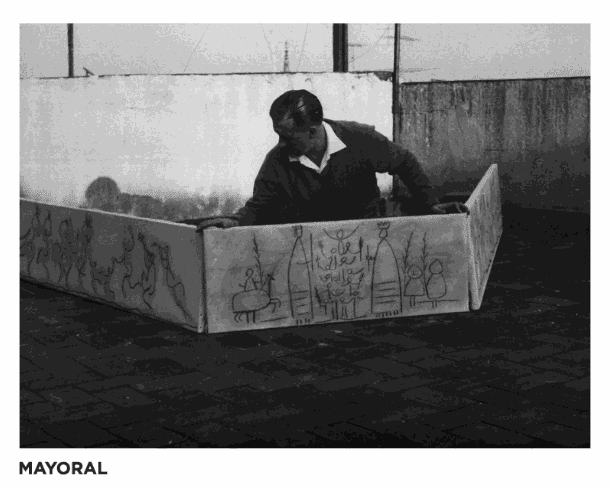Pablo Picasso Málaga, 1881-Mougins, 1973
Overview
“When I was a child, my mother said to me, 'If you become a soldier, you'll be a general. If you become a monk, you'll end up as the Pope.' Instead, I became a painter and wound up as Picasso.”- Pablo Picasso
Pablo Picasso demonstrated exceptional artistic talent from a young age and went on to develop a revolutionary approach to art that transformed the course of modern art. His diverse body of work spans various artistic movements, including the Blue Period, Rose Period, and the groundbreaking Cubist movement, which he co-founded. Picasso's artistic brilliance, characterized by his bold experimentation with form, color, and perspective, shattered traditional artistic conventions and opened new possibilities for artistic expression. His artistic output encompassed paintings, sculptures, ceramics, drawings, and even stage sets for ballets. Picasso's relentless creativity and constant reinvention made him an icon of artistic innovation, leaving an indelible mark on the art world and inspiring generations of artists to come.
Works
Biography
Pablo Picasso (Málaga, 1881 - Mougins, 1973) was a Spanish painter, sculptor, printmaker, ceramicist, stage designer, poet and playwright who spent most of his adult life in France. Regarded as one of the most influential artists of the 20th century, he is known for co-founding the Cubist movement, the invention of constructed sculpture, the co-invention of collage, and for the wide variety of styles that he helped develop and explore. Among his most famous works are the proto-Cubist Les Demoiselles d’Avignon (1907), and Guernica (1937), a dramatic portrayal of the bombing of Guernica by the German and Italian airforces.
Picasso demonstrated extraordinary artistic talent in his early years, painting in a naturalistic manner through his childhood and adolescence. During the first decade of the 20th century, his style changed as he experimented with different theories, techniques, and ideas. After 1906, the Fauvist work of the slightly older artist Henri Matisse motivated Picasso to explore more radical styles, beginning a fruitful rivalry between the two artists, who subsequently were often paired by critics as the leaders of modern art.
Picasso’s work is often categorized into periods. While the names of many of his later periods are debated, the most commonly accepted periods in his work are the Blue Period (1901–1904), the Rose Period (1904–1906), the African-influenced Period (1907–1909), Analytic Cubism (1909–1912), and Synthetic Cubism (1912–1919), also referred to as the Crystal period. Much of Picasso’s work of the late 1910s and early 1920s is in a neoclassical style, and his work in the mid-1920s often has characteristics of Surrealism. His later work often combines elements of his earlier styles.
Exceptionally prolific throughout the course of his long life, Picasso achieved universal renown and immense fortune for his revolutionary artistic accomplishments, and became one of the best-known figures in 20th-century art.
Exhibitions
-

Saura & Picasso. The weight of history
PARIS 9 Jan - 28 Feb 2024Under the curatorship of Kosme de Barañano, we are presenting an exhibition in Paris dedicated to the artist Antonio Saura (Huesca, 1930 - Cuenca, 1998), underlining the importance of Pablo...Read more -

Post Picasso
PARIS 7 Sep - 6 Oct 2023PABLO PICASSO - ARJEN - JULIO ANAYA - ALEXA GUARIGLIA - LEO PARK - ROBERT POKORNY- ALIM SMITH - ADAM ŠTECHRead more
The exhibition "Post Picasso," planned and conceptualized together with Saša Bogojev, showcases the works of six artists from diverse backgrounds, exploring and reinterpreting the artistic legacy of Pablo Picasso. -

Picasso. Human Landscapes
BARCELONA 18 Jan - 18 Mar 2023Mayoral presents an exhibition devoted to Pablo Picasso (Málaga, 1881 – Mougins, 1973) which highlights how the artist’s optimal field of experimentation was the human figure. A selection of seven...Read more -

Zóbel and the Great Post-War Generation
MADRID 12 - 21 Mar 2021Mayoral’s first exhibition in Madrid, ‘Zóbel and The Great Post-War Generation’, will be held from the 11th to 21st March at the Fundación PONS. The exhibition brings together more than...Read more
-

The Space of Dreams
BARCELONA 12 Sep 2017 - 5 Jan 2018Through an accurate selection of works of art, the exhibition shows the importance that the dream has had as a constructor of the artistic language of the 20th century to...Read more -

The Space of Dreams
CADAQUÉS 21 Jul - 15 Aug 2017Through an accurate selection of works of art, the exhibition shows the importance that the dream has had as a constructor of the artistic language of the 20th century to...Read more -

Art Revolutionaries
LONDON 18 Jan - 10 Feb 2017Galeria Mayoral presents 'Art Revolutionaires', a museum quality artistic project featuring works by Pablo Picasso, Joan Miró, Alexander Calder and Julio González in London. “Art Revolutionaries” is an exhibition whose...Read more -

Art Revolutionaries
BARCELONA 12 Sep 2016 - 7 Jan 2017Galeria Mayoral presents 'Art revolutionaires', a museum quality artistic project featuring works by Pablo Picasso, Joan Miró, Alexander Calder and Julio González in Barcelona. 'Art Revolutionaries' is a historically accurate...Read more
Publications
-

The Space of Dreams
2017Hardcover, 182 pagesRead more
Publisher: Mayoral Investigació
Dimensions: 16 x 22 cm -

Art Revolutionaries
2016Hardcover, 253 pagesRead more
Publisher: Mayoral Investigació
Dimensions: 30x60 cm -
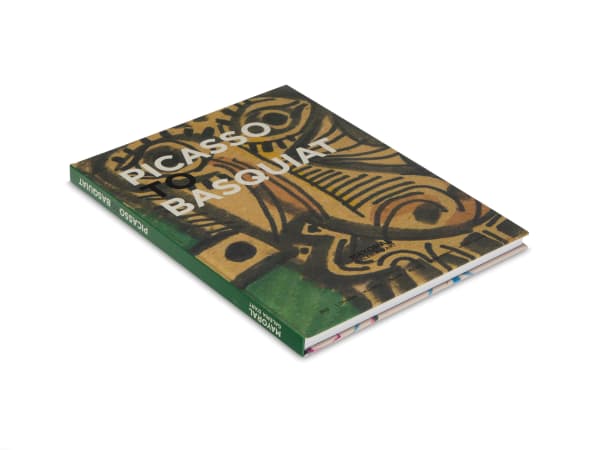
Picasso to Basquiat
2013Hardcover, 135 pagesRead more
Publisher: Mayoral Investigació
Dimensions: 31.7 x 24 cm -
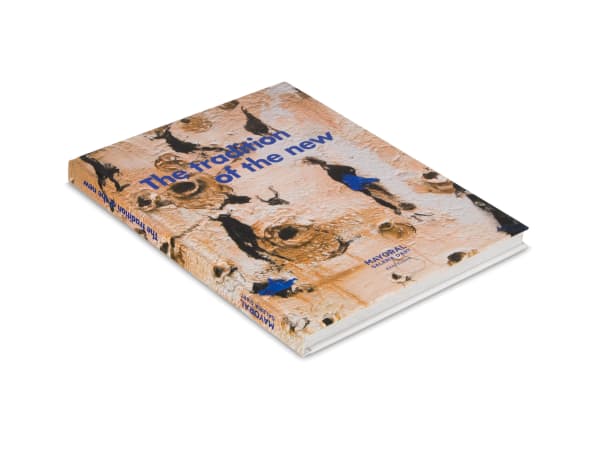
The tradition of the new
2011Hardcover, 152 pagesRead more
Publisher: Mayoral Investigació
Dimensions: 31.7 x 24.5 cm cm
News






